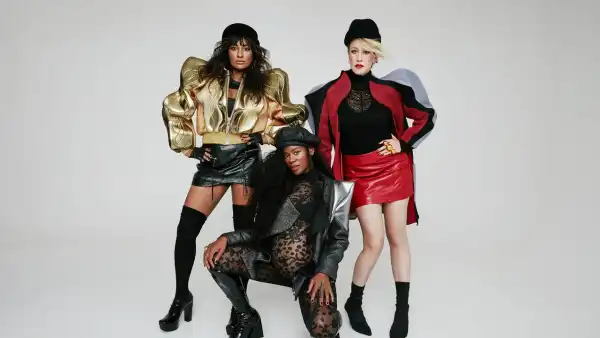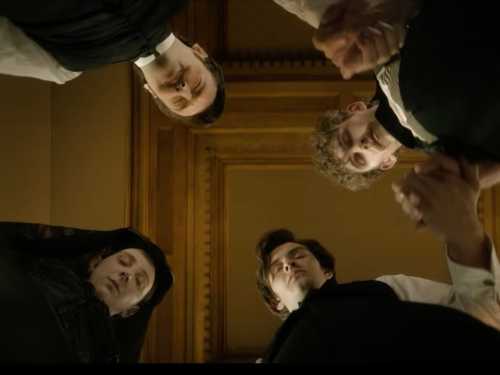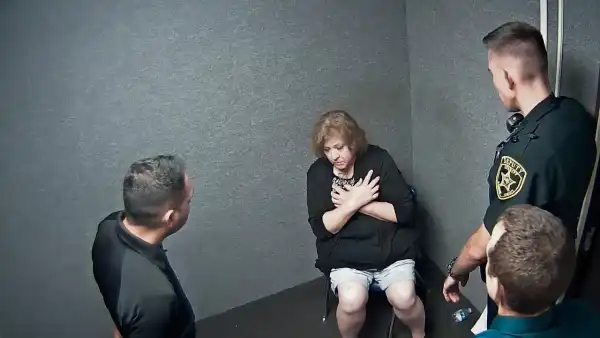
Save this storySave this storySave this storySave this story
Several partner dances from the previous century—such as the foxtrot, the waltz, and the Lindy Hop—mirrored the era’s dual gender roles: men assumed the lead, while women followed, both on the dance floor and in their households. There existed divergences, for example, in the clandestine drag balls originating from Black culture, which gained traction during the nineteen-twenties. Nevertheless, these were still regarded as a fringe phenomenon for “deviants,” according to a 1916 moral-reform committee inquiry. Disco ultimately shattered this structure. In 1970, following the 1969 Stonewall uprising, d.j. David Mancuso launched invite-only clandestine dance gatherings at a venue later known as the Loft, situated at 647 Broadway. Simultaneously, two gay businesspersons, Seymour and Shelley, acquired a struggling establishment named the Sanctuary, previously a church in Hell’s Kitchen. The subsequent year, New York legalized same-sex couples sharing the dance floor publicly; however, legality and social acceptance often diverge, and these spaces (among others) furnished a setting that was both physically and emotionally liberating, fostering the creation of a novel perspective. As the seventies concluded, disco faced intense condemnation, and its records were being incinerated in the streets, the underlying motive was not evolving musical tastes but rather a surge of reactionary tendencies: disco represented a radical political action, a transient paradise fueled by queer communities, Black communities, immigrant communities, and all individuals existing at the intersections thereof.
The recent album “Cut & Rewind,” by the singing group Say She She, stands as a disco project that endeavors to distill the urgency from the genre’s prime era and transpose it onto a political climate beset by similar issues. The ensemble, featuring vocalists Piya Malik, Sabrina Mileo Cunningham, and Nya Gazelle Brown, characterizes itself as a “discodelic soul” act, merging disco soundscapes with funk and psychedelia. Both prior releases from the group, “Prism” (2022) and “Silver” (2023), boast tracks that would seamlessly fit into a nineteen-seventies dance club, while additionally encompassing ballads suitable for late-night R. & B. broadcasts near the decade’s close. “Cut & Rewind,” which debuted earlier in the month, distinguishes itself as fully disco—not merely as a tribute, nor simply to modernize disco’s sounds and aesthetics for a “contemporary listening public.” Instead, the album resonates as crafted by skilled genre practitioners, not tourists seeking nostalgic engagement, thus utilizing disco as a pointed instrument of current commentary.
“Cut & Rewind” isn’t as expansive as its predecessor—“Silver” spans one hour and six minutes, whereas “C. & R.” totals around forty-five minutes—and it possesses a palpable tension, a rhythmic drive. Irrespective of genre expectations, Say She She excels primarily as a vocal band marked by extraordinary talent and diversity. The members harmonize effectively, with each possessing the capacity to lead a song individually. While vocals assumed a dominant role in previous album productions, “Cut & Rewind” showcases amplified, more encompassing instrumentation, resulting in a richer sonic tapestry than the band’s earlier work. On the title track, fragmented bass riffs gradually develop into a sustained drum rhythm, followed by the emergence of the three voices. This serves equally as a song and a declaration of intent, as the lyric “We’re through dealing in petty / now we’re getting good and ready” establishes a core concept for the entire compilation. In “Disco Life,” the instrumentalists (Dan Hastie, Sam Halterman, Sergio Rios, and Dale Jennings) generate a dense and swirling fusion of bass, synth, and percussion, complementing an homage to disco’s idealistic essence and the restoration of physical space. The track adeptly critiques the Disco Demolition Night at Chicago’s Comiskey Park in 1979, eschewing direct reference in favor of an elaborate baseball analogy, initiating with “We’re taking back the major league / A playing field where all are free.”
Conversely, “She Who Dares” conjures a form of dystopia. Despite its lively, bass-infused groove, it portrays a near-future reality where women are deprived of all rights and independence, with the vocal trio embodying a superhero-like resistance. The contrast amid the song’s buoyant sound and its grave subject matter amplifies its compelling, urgent nature. Similar to much of the album, “She Who Dares” surges ahead, propelled by bass, drums, and a brief, sweeping guitar interlude during its conclusion. The audio transmits a message that extends beyond the lyrics: we must persist in movement; we must keep dancing. “Under the Sun,” on the other hand, represents a pro-worker anthem decrying the persistent plight of individuals forced to sacrifice their time, strength, and passion to unfulfilling vocations that enrich others. The phrase “Power is a light source / if treated with respect” elegantly hovers atop serene guitar tones.
“Cut & Rewind” manages an ambitious blend of musicality and political commentary, sustained in part through its avoidance of nostalgic pandering. Despite acknowledging influences such as Nile Rodgers & Chic, the album doesn’t indulge in overt emulation of past eras. The band continues to prioritize complex harmonies, constituting a core aspect of the album’s distinctive appeal. In tracks such as “Bandit,” the voices converge with precision, yet the harmonic impact arises not only from the three vocalists singing in unison but also from the song’s subtle superimposition of one voice upon the others. The resulting sound creates an illusion of listening to three individuals performing the same melody through thin walls, culminating in moments of synchronous fusion. Furthermore, all the album’s objectives unite under a common aim. Discussions surrounding resistance as pleasure often fixate on self-care founded upon commercial principles that encourage emotional and intellectual detachment. “Cut & Rewind,” in stark contrast, accurately surmises that utopia can’t arise in opposition to nothing. An honest evaluation of an untenable reality is necessary, preceding the imaginative labor required to reconstruct a better world upon the present ruins. The endeavor may not be glamorous, but its accompanying sounds could very well be. ♦
Sourse: newyorker.com






